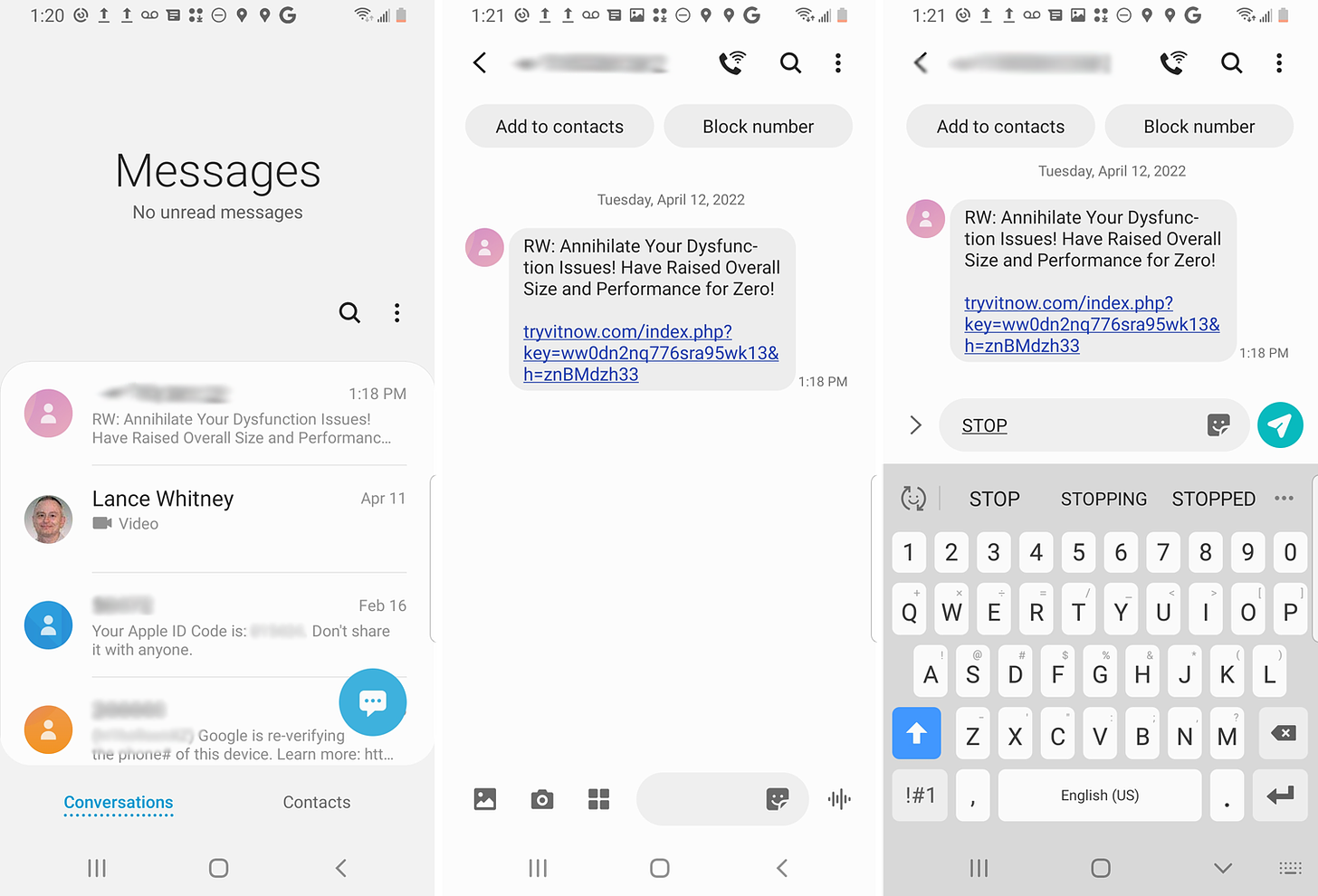What is text message spam
Text message spam is the unsolicited use of text messages to deliver advertising or other marketing messages. Text message spam takes advantage of the popularity of text-based communication, and creates a way for marketers to reach a wide audience without emailing each recipient individually. Today's mobile phones are increasingly being used to communicate with businesses, including those selling products and services, conducting surveys, and collecting feedback on products.
Share this article to help someone 👇
How to spam texts work?
Text message spam typically begins with unsolicited automated text messages from a third party. The type of company behind this unwanted messaging varies; often it is an established firm that has developed software for its own marketing purposes or has purchased software from an outside firm without scoping out the terms in advance.
What do spam texts contain?
When the messages are sent, they contain links to the third party's website. If a recipient clicks the link and visits, their phone is directed to a landing page designed to solicit personal information, or it may be programmed to download malicious software that can infect users' computers.
What are spam texts used for?
A similar form of unwanted marketing is also known as SMS mining, where unsolicited text messages are used for data mining purposes, such as for lead generation (for example via quizzes), time-limited promotions or advertiser-defined message templates. It has been reported that these texts have an impact on "best" country and mobile phone usage data.
How common is text message spam?
The advent of the Internet has made it easier for marketing firms to reach people's phones with more information about products and services. In a 2021 survey, 72% of American adults reported receiving at least one spam text message. On mobile phones, spam texts are typically displayed in their entirety on recipients' screens, rather than being sent as a series of short text messages or messages that the recipient cannot view until they receive new ones.
Text message spam is likely to increase as more people use their mobile phones to communicate. Some estimates suggest that by 2022, people will be sending ten billion text messages per day within the U.S., which is equivalent to over 95% of all wireless communications traffic volume nationwide. The U.S. National Bureau of Economic Research has estimated that there will be over one million mobile phone spam messages sent out every day in the U.S. by 2022. The number of mobile phone owners will grow to over two billion in the same period.
How to avoid and block spam text messages
Spam is a huge problem on our phones. Many people have to block unwanted texts, which can be frustrating and time-consuming. The good news is there are many ways to block spam text messages other than simply blocking the phone number of the person who sent it.
There are three easy ways to block spam text messages.
Do not respond to spam texts
First and foremost, do not interact with the message. If you click a link or attachment in a spam message, it could trigger malware that infects your phone. You also don't want to respond. Many legitimate robotexts include an option to text STOP to tell the company to remove you from their distribution list, but that doesn't work with scammers.
In fact, by responding to a spam message, you're only confirming to the scammer that your number is valid. From there, your phone number may be disseminated to other scammers, increasing your odds of getting more junk messages. So unless you know the text came from a legitimate company that honors such requests, you're better off not responding at all.





